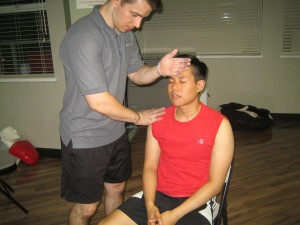Septic arthritis is the inflammation of the joint due to a bacterial or fungal infection that causes severe pain at the joint. This occurs when an infection in another part of the body spreads to the bloodstream and reaches a joint. Another less common cause of septic arthritis is direct infection of the joint through infection of a microorganism from an injury or during surgery. The most common sites for septic arthritis are the knee and hip joints. Bacteria, such as staphylococcus or streptococcus, are the most common cause of acute septic arthritis. Staph bacteria is commonly part of the skin flora. On the other hand, most cases of chronic septic arthritis are cause by Mycobacterium tuberculosis (bacteria) and Candida albicans (fungi).
Causes of Septic Arthritis
Septic arthritis can be caused by any type of infection to the body. Some of the possible causes of septic arthritis are the following:
- Infections of the digestive system, such as gastroenteritis, etc.
- Lung infections, such as pneumonia, bronchitis or upper and/ or lower respiratory tract infections
- Urinary tract infection
- Infection of reproductive system
- Puncture wounds
- Injection of drugs
- Surgery near the joint
Risk Factors for Septic Arthritis
Although anyone can get septic arthritis, having or being exposed to certain factors can increase an individual’s chance of develop septic arthritis. Some of the risk factors of septic arthritis are the following:
- Ongoing bacterial infection in the body
- Chronic illnesses or diseases, such as diabetes, rheumatoid arthritis, etc.
- Artificial joint implants
- Recent joint injury, arthroscopy or other surgeries
- Use of medications that weaken the immune system
- Children younger than three years of age
- Elderly, especially with health problems
Signs and Symptoms of Septic Arthritis
Septic arthritis affects the joints, thus it is definite to affect movement. The common signs and symptoms of septic arthritis are the following:
- Severe joint pain and swelling that usually occurs in just one joint (pain worsens upon movement)
Fever is a common sign of septic arthritis - Fever
- In children below 3:
- Fever
- Unable to move the infected joint
- Cries upon movement of infected joints
- Irritability
- In children and adults:
- Unable to move the infected joint
- Severe joint pain, redness and swelling
- Low-grade fever
Treatment for Septic Arthritis
Although septic arthritis is not a medical emergency, it can lead to further complications, such as septic shock, a medical emergency. Treatment for septic arthritis will mainly be composed of antibiotic drugs and joint drainage:
- Use of antibiotic drugs that is specific to infecting agent
- Joint drainage to remove the infected joint fluid. Some of the drainage methods include:
- Insertion of needle into the joint space
- Suction and drainage of fluid through the small incisions around the joint
- Open surgery
Disclaimer: This article does not provide medical advice and should not be substituted for formal training. The information given should not be used for self-diagnosis. Seek medical attention when necessary. It is important to recognize symptoms of potential medical emergencies at all times to avoid complications from developing. To learn more about to how to manage septic arthritis, enrol in St Mark James first aid and CPR courses which are offered throughout North America.
Sources:
Septic arthritis. (2013, January 17). Mayo Clinic. Retrieved October 17, 2013, from http://www.mayoclinic.com/health/bone-and-joint-infections/DS00545
Septic arthritis. (2011, June 9). National Institute of Health. Retrieved October 17, 2013, from http://www.nlm.nih.gov/medlineplus/ency/article/000430.htm

